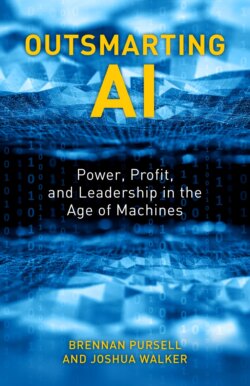Читать книгу Outsmarting AI - Brennan Pursell - Страница 10
На сайте Литреса книга снята с продажи.
7 AI Myths, 7 AI Rules
ОглавлениеThe term artificial intelligence is an old fund-raising gimmick. John McCarthy coined the term in 1955 to apply for Rockefeller money to pay for a conference at Dartmouth about “automatic computers.” The goal of the conference was “to find how to make machines use language, form abstractions and concepts, solve kinds of problems now reserved for humans, and improve themselves.”[1] Computers are as far as away from that as ever, but in some applications they can at least appear to come close.
Today more than one thousand vendor companies use the term “AI” to sell their services or to raise money from investors to cover their expenses. Whether they actually use AI algorithms is another matter. Many exaggerate what AI can do, and there’s nothing new in that. In the past sixty years, we have gone through cycles called “AI winters” when soaring promises returned failed deliverables, underwhelmed investors, and sank research funding. Depending on how you count, an AI winter happens roughly once per decade.
We find ourselves in another hype cycle once again. Claims about AI capabilities have spun out of control in media and advertising, leaving the tight discipline of computer science firmly on the ground. Joshua and I do not, however, predict another AI winter because of the real strides being made in computer-processing speed and storage, and the explosive growth of available data. There will be a major shakedown among vendors, but the tech is only getting better. (I will explain how it works in chapter 2.)
The first step in your successful, profitable adoption of AI tech in your organization is to clear away the myths that cloud the real picture. Below are seven that are repeated all too often. Let’s make short work of them.
